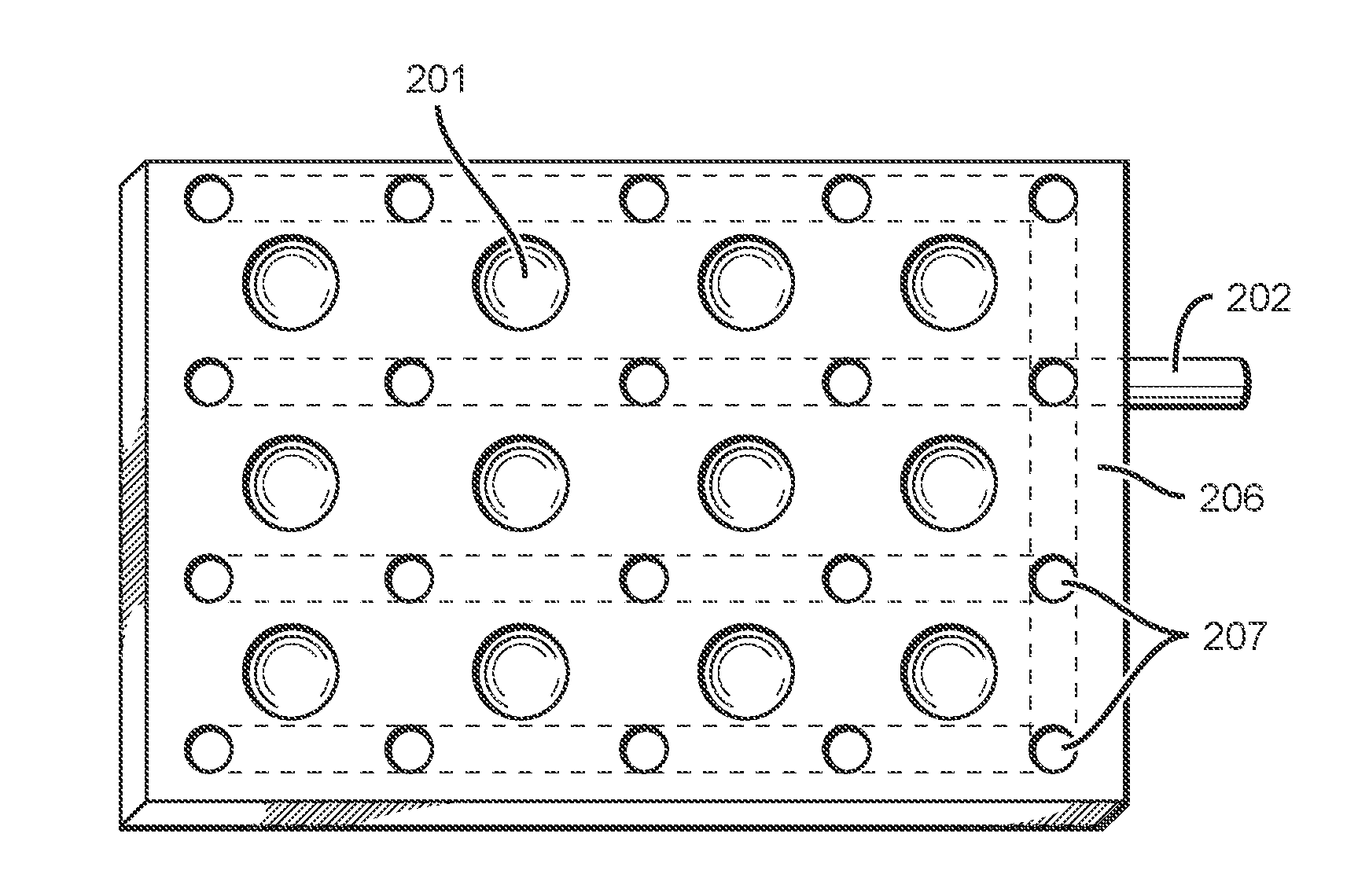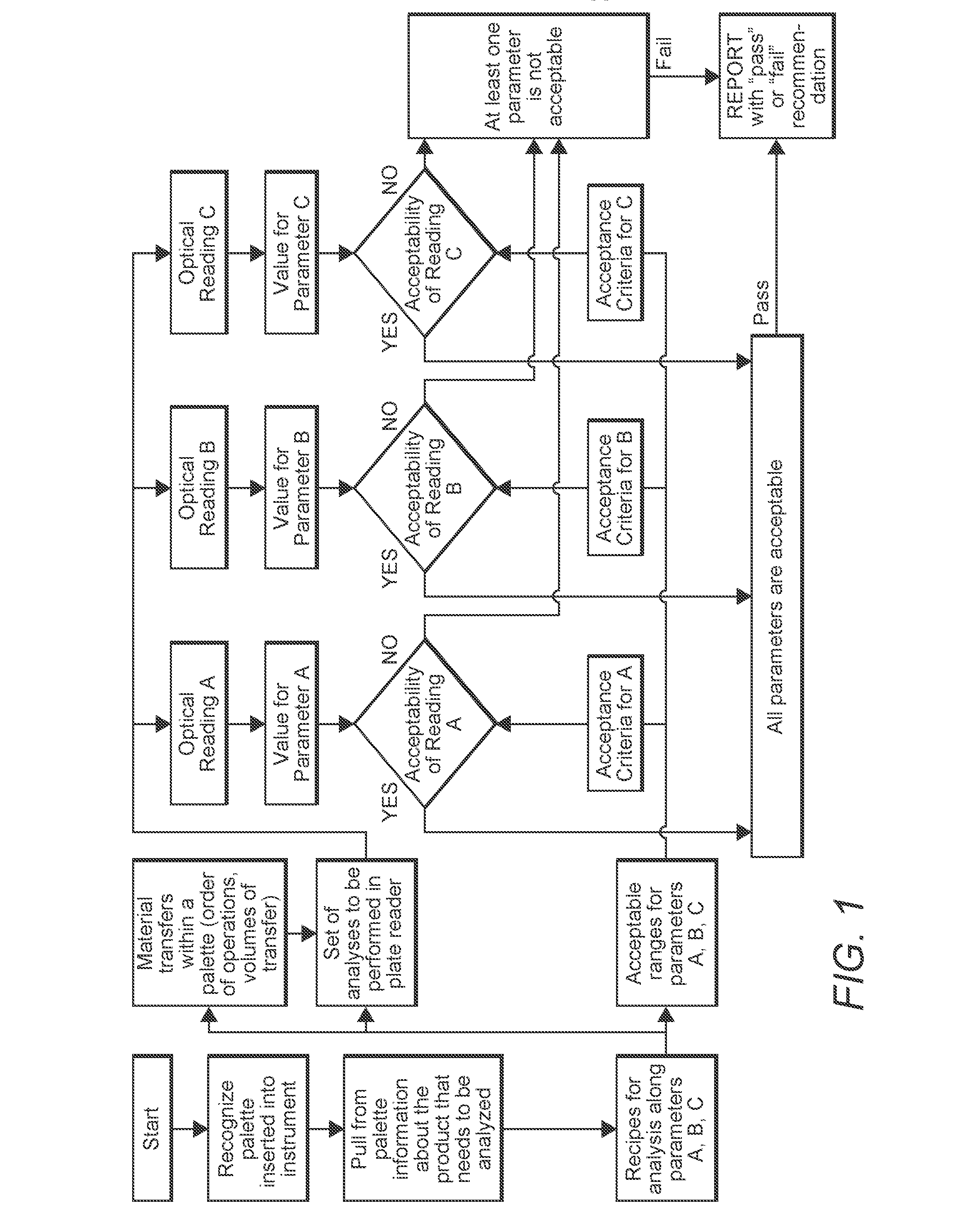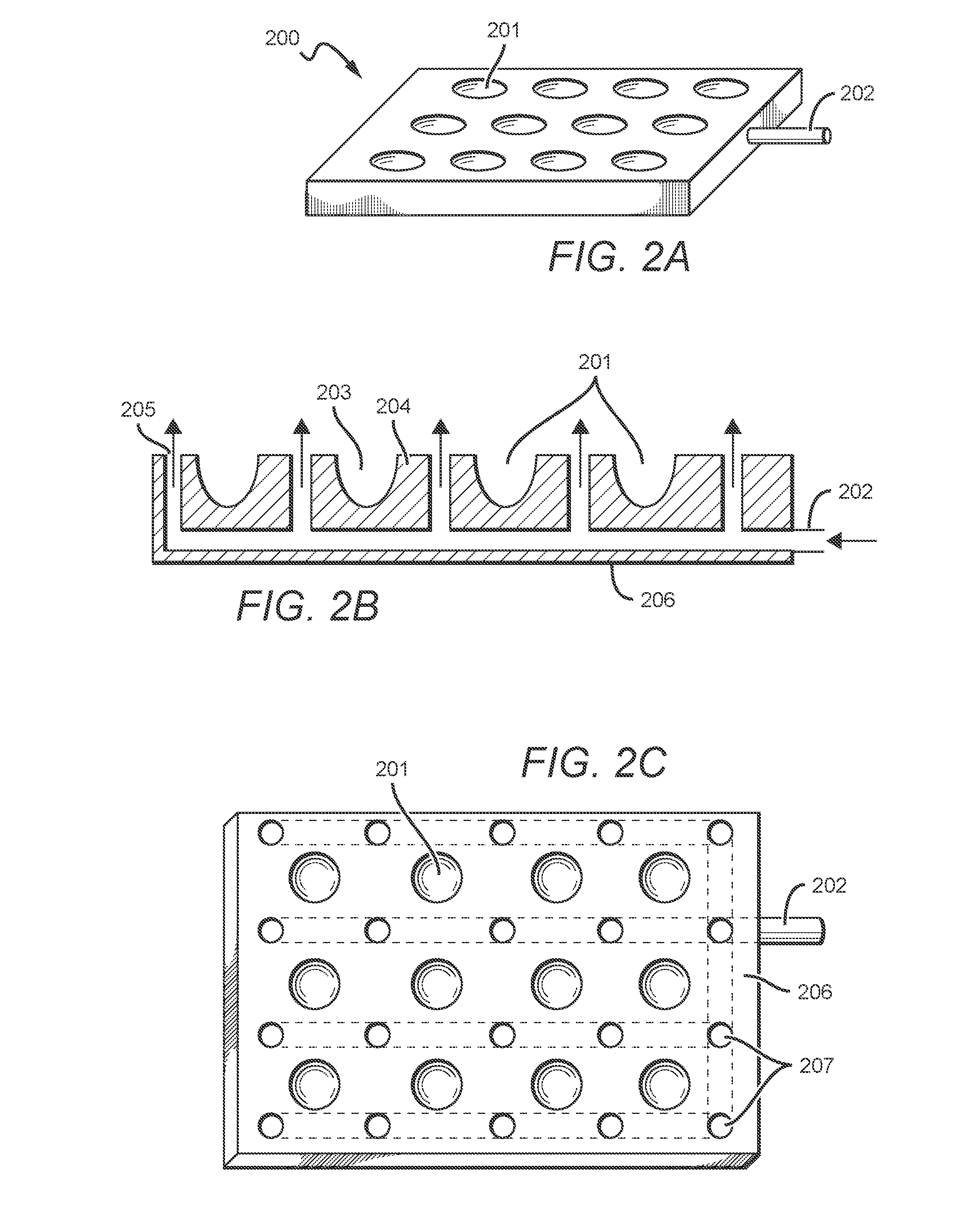Palette-based systems for analyte characterization
a technology of analyte characterization and pallets, which is applied in the direction of material analysis using wave/particle radiation, chemical analysis using titration, and after-treatment of biomass, etc. it can solve the problem of direct impact on the handling of small quantities of liquid, the loss of liquid material on the transfer surface, and the limited synthesis of radiopharmaceuticals to relatively diluted solutions. problem, to achieve the effect of facilitating the obtaining of all test results
- Summary
- Abstract
- Description
- Claims
- Application Information
AI Technical Summary
Benefits of technology
Problems solved by technology
Method used
Image
Examples
Embodiment Construction
[0052]Devices, systems, and methods of the inventive concept are directed towards simplified and efficient synthesis of radiopharmaceuticals and towards simplified and efficient testing or characterization of such radiopharmaceuticals prior to use. This can be implemented through the use of single use devices capable of performing a multitude of tasks involved in radiopharmaceutical synthesis and / or characterization. Such single use devices can be unitary, and in some embodiments can have or approximate dimensions corresponding to the ANSI / SLAS 1-2004: Microplates—Footprint Dimensions for microplate dimensions. In preferred embodiments, all tests utilized for characterization of radiopharmaceuticals produce results that can be determined optically.
[0053]Throughout the following discussion, references will be made regarding servers, services, interfaces, portals, platforms, or other systems formed from computing devices. It should be appreciated that the use of such terms is deemed t...
PUM
| Property | Measurement | Unit |
|---|---|---|
| wavelengths | aaaaa | aaaaa |
| wavelengths | aaaaa | aaaaa |
| thickness | aaaaa | aaaaa |
Abstract
Description
Claims
Application Information
 Login to View More
Login to View More - R&D
- Intellectual Property
- Life Sciences
- Materials
- Tech Scout
- Unparalleled Data Quality
- Higher Quality Content
- 60% Fewer Hallucinations
Browse by: Latest US Patents, China's latest patents, Technical Efficacy Thesaurus, Application Domain, Technology Topic, Popular Technical Reports.
© 2025 PatSnap. All rights reserved.Legal|Privacy policy|Modern Slavery Act Transparency Statement|Sitemap|About US| Contact US: help@patsnap.com



